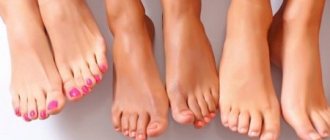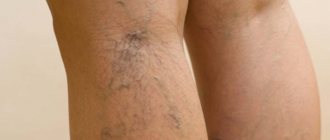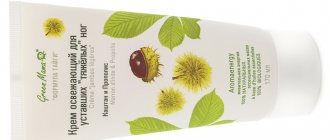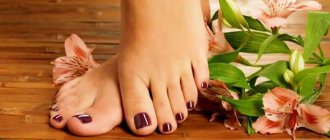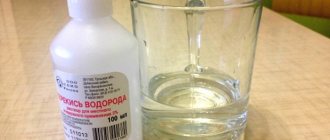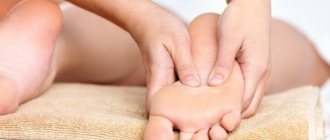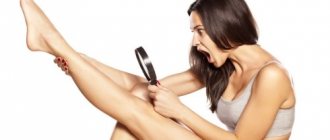We distinguish edema by location
• Cardiac edema is characteristic of the abdomen, genitals, legs and hands.
• When veins are affected, swelling appears in the legs and is accompanied by pain, a feeling of heaviness, redness of the feet, and the limbs become enlarged during the day.
• Lymphostasis is characteristic of the extremities.
• Swelling in the joint area may indicate rheumatism or arthritis.
Edema is a fairly serious problem that requires treatment. But before looking for treatment methods to get rid of swelling in the legs, it is necessary to identify the cause of their occurrence.
Sitting cross-legged for long periods of time
Both people who are forced to spend the entire day on their feet and office workers who have to sit in one position for several hours in a row have experienced leg swelling at least once. It is no coincidence that doctors unanimously say that during the day it is necessary to constantly change activities and devote 5-10 minutes to walking or resting every hour (depending on whether the work is sedentary or standing).
Uncomfortable position of the legs, tight shoes and tight pants - all this inevitably leads to stagnation, which poses a great threat to health. Lack of stress on the joints, stagnation of blood and lymph in the lower part of the body are often accompanied by poor nutrition, excess weight and lack of physical activity at all. And at the end of the working day, a person often feels pain, heaviness and severe fatigue in his legs. Therefore, a person has only one desire - to quickly get to the sofa.
Physical inactivity is very dangerous because it triggers many pathological processes in the body. Lack of physical activity leads to varicose veins, thrombophlebitis, obesity, and joint diseases. Muscles that are constantly at rest begin to atrophy, so swelling of the legs due to sedentary work is an alarming signal that indicates the need to fall in love with sports.
Causes of swelling in the legs
There are several main reasons that lead to swelling in the legs:
• violation of the permeability of the vascular membrane;
• lack of protein and electrolytes in the blood;
• dysfunction of the valvular apparatus of the veins;
• in case of injury or removal of lymphatic vessels, lymphatic edema occurs, which is characterized by the influx of lymph to the site of injury;
• inflammation, allergy, trauma;
• neurogenic edema appears when nerve fibers are damaged;
• cardiac dysfunction.
Swelling with varicose veins
Swelling in the legs is inevitably accompanied by inflammatory diseases of the veins: phlebitis and thrombophlebitis. The main symptom of the appearance of varicose veins is that the legs systematically swell, but do not turn red.
But it is better not to neglect the problem with edema in order to prevent the development of varicose veins. To do this, it is useful to know how to get rid of swelling in the legs.
But if varicose veins are already present, then it is necessary to take measures to combat swelling with varicose veins. Varicose veins are often the cause of edema. How to get rid of swelling in the legs due to varicose veins? To treat varicose veins, you should consult a phlebologist. At home, to prevent further development of the disease, it is forbidden to take hot baths, visit baths, saunas, it is necessary to reduce the consumption of liquid and salt, you should wear heels no more than 4 cm high, and do contrasting foot baths daily.
Diuretics for swollen legs
Diuretics for swelling of the legs have a common name - diuretics.
They, in turn, are divided into several classes:
We suggest you find out which iron sole is better: ceramic or non-stick
Saluretics, which can be represented by: loop drugs (Bumetanide, Torsemide, Ethacrynic acid, Lasix, Furosemide), thiazide drugs (Cyclomethiazide, Hypothiazide), carbonic anhydrase inhibitors (Diacarb, Acetazolamide) and sulfonamides (Clopamide, Chlorthalidone).
Potassium-sparing diuretics, including: Spironolactone, Amiloride, Veroshpiron, Triamterene, Eplerenone.
Osmotic ones are Mannitol and Urea.
All these drugs differ in effectiveness, duration of action and speed of onset of the therapeutic effect. They have indications and contraindications and are prescribed exclusively by a doctor in accordance with the patient’s disease.
Education: Diploma in the specialty “Andrology” received after completing residency at the Department of Endoscopic Urology of the Russian Medical Academy of Postgraduate Education at the urological center of the Central Clinical Hospital No. 1 of JSC Russian Railways (2007). Postgraduate studies were also completed here by 2020.
16 most harmful foods - proven by science
5 proven effective antiviral drugs for influenza and ARVI
Sometimes severe swelling occurs due to a fall or injury to the lower limb. This situation requires the immediate participation of a medical professional who can make the correct diagnosis and provide first aid. If a person who has been injured experiences severe pain even with slight movement.
Often in the evening, adults discover an unpleasant symptom. These are swollen feet. When swelling occurs, you immediately feel a feeling of heaviness in your legs. Even small feet turn into something like bedside tables. It happens that this disease does not cause pain symptoms - at least at the initial stage.
Traditional medicine offers such an effective method of combating swelling of the legs: 1 teaspoon of blue cornflower should be poured into 250 grams. boiling water and let it brew for 8-9 hours. The color of the infusion has a yellow-brown tint, depending on the freshness of the raw materials (young inflorescences give a more saturated shade).
Calculation tables for men, women and children, all ages!
Find out the reasons for deviations!
Decoding of all types of analyzes!
Don't know your disease? Find it by symptoms!
Operating surgeon proficient in all methods of non-surgical and surgical treatment of varicose veins (sclerotherapy, endovasal laser and radiofrequency obliteration, miniphlebectomy, phlebectomy). He has extensive experience in the treatment of acute pathology of the venous system (phlebothrombosis, thrombophlebitis) in the department of emergency vascular surgery.
He is a member of the Russian Society of Angiologists and Vascular Surgeons. Regular participant in All-Russian and international scientific conferences and master classes. With his participation, articles are published in central scientific journals on the problems of phlebology and vascular surgery.
And for those who didn’t make it in time for the broadcast, we select the most current recommendations.
How to check if your feet are swelling:
- Press firmly (and hold your finger) on the inside of your ankle or shin, above the bone. If, after letting go, the dimple remains and straightens out slowly, your legs swell;
- if in the evening you cannot put on the same shoes that you were wearing in the morning;
— if there are traces left from the embedded elastic bands of the socks.
We suggest you read Why the washing machine does not turn on
Edema is the accumulation of fluid in the lower extremities, not in the vessels, but in the tissue.
Fluid can drain from the legs through the veins and through the lymphatic system. Why isn't this happening? Here are the three most common reasons.
— If the veins are dilated (varicose veins), the valves in them may not close completely, and the blood thrown up by the muscles returns to the legs. And there it sweats in the fabric. And it turns out swelling.
If only one leg is swollen, varicose veins are most likely to blame.
What to do: An ultrasound examination of the veins will reveal poor functioning of the venous valves.
— The second cause of edema is heart failure. The heart does not pump blood out of the legs intensively enough. When cardiac output is impaired, the kidneys begin to produce special substances that retain salt; the salt gets into the tissue and draws liquid there.
Cardiac edema is always bilateral. There are no visible tendons or blood vessels on the legs.
What to do: limit, or better yet completely eliminate, salt from your diet. And treat heart pathology!
- Swelling due to problems with the lymphatic system. Due to a violation of the outflow of lymph, the legs swell in a special way - the so-called “elephant’s foot” or “elephantiasis” occurs. This usually happens with one leg. But it happens on both at once.
What to do: See a doctor for an examination.
About life
Hiccup, hiccup, move on to someone
The cause of hiccups is an involuntary contraction of the diaphragm (the dome-shaped muscle that separates the chest cavity from the abdominal cavity), as a result of which the release of air through the closed vocal cords is accompanied by a characteristic sound.
Short-term hiccups can occur due to, for example, overeating.
Prolonged (more than 10 minutes) hiccups can be a symptom of:
— hiatal hernia;
- heart or lung diseases;
- brain cancer or meningitis.
What to do?
— Take a deep breath and hold your breath as long as possible;
- lean forward and drink water in small sips from a bent position;
- take a paper bag, exhale into it and hold your breath for a few seconds;
- swallow a spoonful of sugar;
- sit down, sharply press your knees to your chest, take a deep breath and hold your breath.
!If hiccups last more than 10 minutes, take chlorpromazine and consult a doctor to find out the cause and begin treatment.
https://www.youtube.com/watch?v=5eGAlt2z6v0
Watch “Live Healthy!” from Monday to Friday at 9.45. First
How to get rid of swelling in the legs
1. It is necessary to properly organize the motor mode. Walk more; if you have a sedentary job, then try to take breaks in which you can simply walk around the office.
2. Reduce your intake of carbohydrates and salt.
3. You can get rid of edema if you limit the intake of certain medications: diuretics and laxatives.
4. Compliance with the drinking regime. It is recommended to drink at least 1.5 liters of liquid per day; it helps remove salts from the body.
5. Do the first aid exercise regularly. Lie on your back, place a pillow under your feet so that your heels are 12 cm above heart level. With this position of the body, fluid from the legs flows into the kidneys and cardiovascular system, and then is excreted from the body.
6. If you suffer from excess weight, then be sure to get rid of it.
7. Exercise regularly. During exercise, blood and lymph circulation improves, which prevents fluid retention in the body.
8. Special creams containing lavender and menthol help with swelling on the legs.
9. Give your feet a contrast shower every day.
Water Diet. How to get rid of swelling and excess fluid in the body?
If in the evenings deep marks began to remain on your feet from seemingly not at all tight elastic bands of socks and socks, and also, for no apparent reason, your weight increased sharply, your favorite shoes became too small, swelling, cellulite and bags under the eyes appeared - all this can be symptoms of the accumulation of excess fluid in the body. Fluid retention
, although unpleasant, is most often a completely harmless syndrome. However, it is necessary to consult a doctor to rule out diseases that may also be accompanied by edema, such as kidney disease, circulatory disease and metabolic disorders.
1 g glycogen
holds
4 g of water.
You can determine whether you have swelling or not in this way:
Press your fingers into the shin bone. If fingerprints remain, this is a sign that your feet are swollen. But swelling can also be hidden. Doctors can diagnose them through regular weighing, measuring blood pressure and monitoring urine tests.
Causes of edema and fluid retention in the body
• Poor nutrition, which leads to an imbalance of electrolytes: sodium, potassium and chlorine ions. • Excessive drinking, when fluid intake exceeds its elimination. • Sedentary lifestyle. • Taking certain medications and contraceptives. • The habit of crossing your legs, predominantly standing or sedentary work, heat and tired legs, uncomfortable, tight shoes - everything that leads to impaired blood circulation in the legs. • Pregnancy and the changes in the body that accompany it. • Premenstrual syndrome. • Diseases of the kidneys, circulatory and digestive organs, metabolic disorders and a number of other diseases.
How to reduce the amount of fluid in your body and cope with swelling yourself
There are completely harmless measures that will help relieve swelling and reduce the amount of fluid in your body.
Linda Lazarides' Water Diet
Diuretic diets
There are many. But by far the most famous and popular of them is the Drainage Diet, written by Linda Lazarides.
The essence of this diet:
swelling and excess weight occur not because we drink a lot of water, but because certain substances retain it in the body.
This means that the problem of edema can be solved by giving up these substances - primarily salt and carbohydrates.
Foods not allowed: Sugar, honey, syrup and all products containing them, dairy products, eggs, yeast, any red meat, salt and all salty foods, including ham, bacon, smoked fish, cheeses, cakes, pastries, chocolate, potato chips , butter, margarine, fried foods, cream, mayonnaise, baked goods, sauces, gravies, fatty desserts, wheat flour, alcohol and foods containing artificial additives.
You can eat: Soy milk and yogurt (natural, without additives), fruits (except grapes and bananas), vegetables (except potatoes), seeds, nuts, oatmeal, brown rice, legumes, lean poultry and fish. You can drink freshly squeezed juices, herbal teas, and other low-caffeine drinks.
The number of permitted foods is not limited - you can eat as much as you want.
Efficiency: in the first week, weight loss can reach 6 kg
(this occurs due to fluid loss). After that, the pace will not be so noticeable, but 1-2 kg per week is a very realistic result.
Regularly following this diet a week before your period can significantly alleviate PMS, or even get rid of it altogether. Herbal infusions and teas that reduce swelling
• Green tea • Black or green tea with milk • Melissa • Lingonberry tea • Rosehip decoction • Caraway decoction • Hawthorn decoction • Mate • Water with lemon juice • Complex pharmaceutical preparations, which usually include: bearberry, knotweed, nettle , horsetail and other herbs. Foods that reduce swelling
• Watermelon, cucumbers, melon • Celery • Beans • Baked potatoes • Green apples • Oats • Low-fat milk and kefir • Honey • Viburnum, rowan juice • Sorrel • Nettle • Beets
What else helps reduce swelling
• Sauna, bath, bath
Bath recipe to relieve swelling and excess fluid
Pour water at a temperature of 37-38 C° into the bath, dilute 300 g of sea salt and a pack of soda in it. The time for taking such a bath is approximately half an hour. You should not drink 2 hours before the bath and 2 hours after. You can repeat this procedure 3 times a week. This bath helps you lose 500-700 g of weight per procedure.
• Massage and warm-up
If you sit a lot, then touch your toes as often as possible, make circular movements with your feet, stand on your toes for a few seconds (15-20 times). In the evenings, lie down for 10 minutes and throw your legs up on a wall or some hill, and then vigorously rub them from your feet to your knees.
• Contrast shower for feet
A contrast shower helps strengthen the blood vessels in the legs. It is not necessary to specifically set aside time for this; after a normal shower, change the water several times from hot to cool and vice versa. There is no need to turn on ice water; leave it at a temperature that does not irritate you. You need to approach colder water gradually. Contrast baths can only be done for the feet. The basic rule of such procedures is that you need to finish in cool water.
Causes of edema during pregnancy
Edema during pregnancy is a special case, because swelling in this interesting position can hardly be called a serious pathology, but it is also impossible to say that this is definitely the norm. It has been established that edema during pregnancy develops due to several reasons:
• disruptions in the body's water-salt balance;
• compression of the ureters due to an enlarged uterus, which leads to impaired outflow of urine;
• compression of the lymphatic and venous vessels by the increasing size of the uterus, which leads to disruption of the outflow of fluid from the lower extremities.
Reason #1: Socks with compression elastic
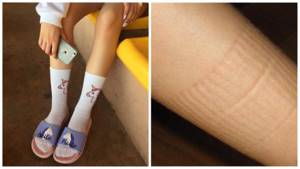
If after taking off your socks there is a mark on your shin, as in the photo above, then this means that your socks are seriously harming you. The pressure band does not allow the tissues of the lower leg and feet to function fully during the day, which leads to swelling of the feet to a greater or lesser extent. The elastic area of the sock slows down normal blood flow, which can lead to swelling and pain in the feet.
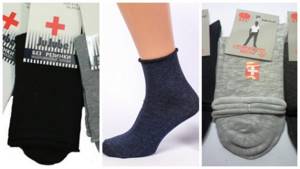
The modern textile industry market has long ago solved the problem of socks with compression elastic bands. Some manufacturers call these socks medical. Such products are very comfortable to wear. And you don’t have to worry that they will fall off or slide down - the manufacturers have resolved this issue, and socks without elastic bands in use are exactly the same as the ones we are used to, having a wide elastic part.
How to get rid of swelling in the legs during pregnancy
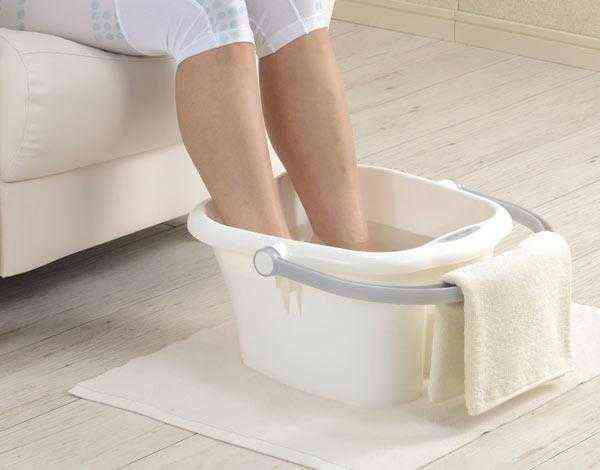
In the late stages of pregnancy, the expectant mother often experiences swelling in her arms and legs. Sometimes “dropsy” develops - the pregnant woman cannot clench her hand into a fist or simply bend her leg. If dropsy is not treated, it can quickly turn into gestosis - late toxicosis, which is characterized by severe swelling, high blood pressure, and a large amount of protein in the urine. This condition is very dangerous for the child and the expectant mother, as the risk of miscarriage and premature birth increases. Therefore, it is still necessary to keep the appearance of edema under control. For the safety of the health of the unborn child, every mother should know how to get rid of swelling in the legs during pregnancy.
• First, you need to know that stopping fluid intake will not solve the problem, but will only worsen the condition. Due to a lack of fluid, the body, on the contrary, will rapidly accumulate it.
• In the first and second trimester of pregnancy, drink no more than 1.5 liters of fluid per day. In the third - reduce this amount by half (750 ml).
• It is recommended that pregnant women take regular walks.
• It is necessary to limit the consumption of salty and fatty foods, smoked foods, spicy foods, carbonated drinks, and coffee.
• It is recommended to do a fasting day on juice and apples once a week.
• A pregnant woman's sleep should be at least 10 hours at night and 1.5-2 hours during the day. When sleeping, you need to place a cushion under your feet.
• Massage and baths are good for tired legs.
• Sometimes pregnant women are prescribed diuretic teas and vitamins.
It is worth noting that during pregnancy, self-administration of any medications is not allowed. Consultation with your attending physician is necessary.
Not perfect, but I bought more
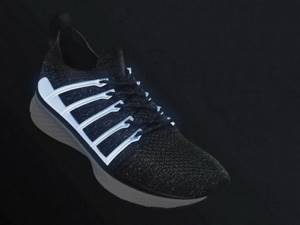
They don’t actually light up, although they promised
, 1800 kilometers were covered in them . Mainly as regular everyday shoes.
Nevertheless, they got gravel, sand, and beach swims in shallow water behind their beloved son’s favorite car. Even construction sites and hot metal surfaces - for hours, more than once.
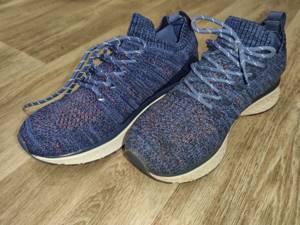
One is new, the second is 2 years later. Not that noticeable
Most likely, next season they will turn into the role of “country slippers”: most likely, the sole will “shrink” to the point of indecency.
On the other hand, the previous pair of Xiaomi/Li-NIng Smart Shoes became worn out from active wear. Fishbone behave much more decently.
They will definitely finish this season somewhere in early October. And maybe they can start the next one. And this is a very good result under such loads.
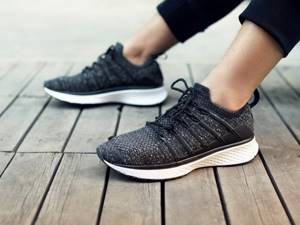
I liked it: for 2,600 rubles, they are better than “singed” Adidas or shoes from “Sportmaster” or any other sneakers in Russian retail for the same money.
But I have my eye on a replacement. And I bought Fishbone again, supplementing them with interesting options from Xiaomi partner brands made from natural materials.
I recommend it, but with reservations.
( 69 votes, overall rating: 4.52 out of 5)

